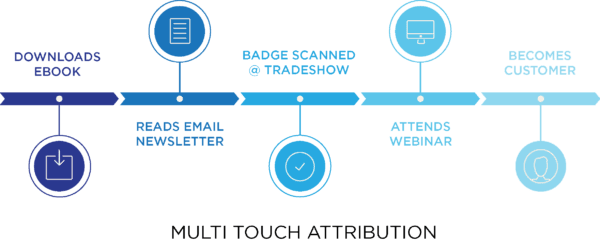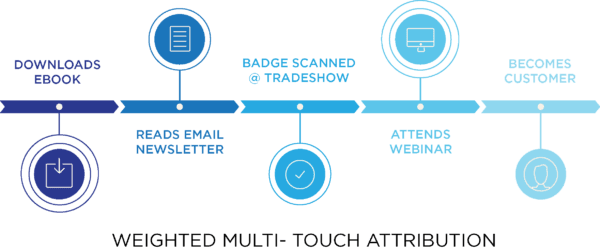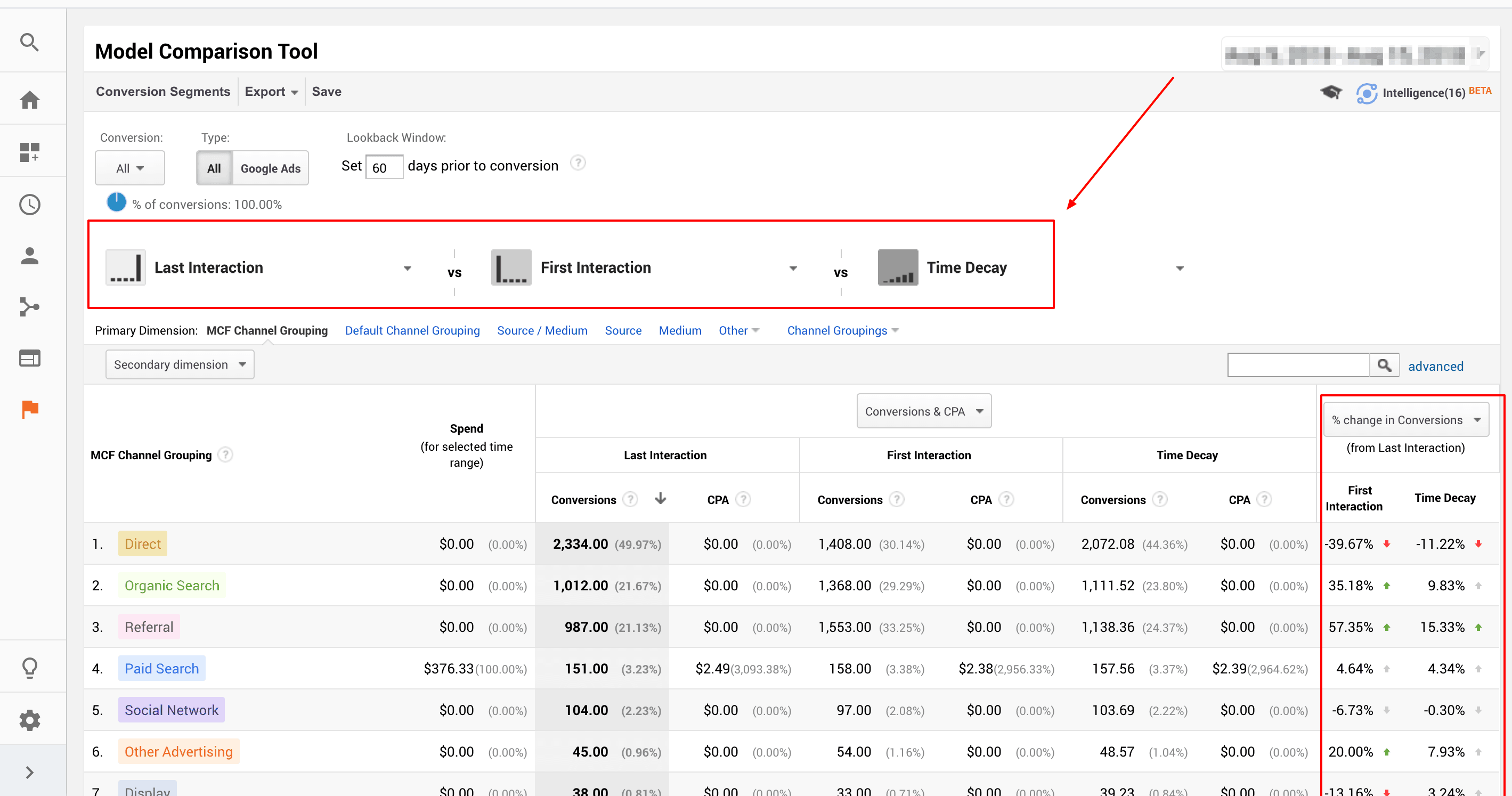Marketing Attribution Model: A Definitive Guide for Marketers
“An attribution model is a method for attributing conversions to marketing channels.” (Neil Patel)
A marketing attribution model helps you understand which campaign should get the credit for each conversion. How did the customer get to know and buy your product or service? Is it through your Facebook Ads, email marketing campaigns or referral program?
There are different types of attribution models you can use. In this article, we’ll show you the four primary ones and how each one works.
Single Source Marketing Attribution
1. First-touch attribution model

In the first-touch attribution model, all credit is given to the first touch taken by the lead.
For example, if a lead is generated after giving away his information to download an ebook, that ebook gets the whole credit for the sale.
Even though the marketing campaign doesn’t directly have an effect on the sale, the first-click attribution model still gives credit to the first touchpoint. This model is useful if there is a short buying cycle.
If your main business goal is to bring in new top-of-the-funnel customers, the first touchpoint becomes important. Thanks to this model, you can evaluate each channel.
2. Last-touch attribution model

This model gives all the credit to the last interaction your business had with a lead before they converted. In the example above, all credit for the sale goes to the webinar. This marketing attribution model is effective when you need to find out which channels generate the most conversions. It lets you easily measure where your bottom-of-the-funnel transitions take place.
Your customers can interact with different marketing channels. However, the place they converted is where you need to pay attention most. With last-click attribution, you can see where the conversions come from.
Multi-Source Marketing Attribution
3. Linear attribution model

More than one channel can contribute to a single conversion. People can see Facebook Ads, display ads, and SEO results before they decide to buy.
If you think that giving all the credit to a single marketing channel isn’t right, you can choose the linear attribution model. This model attributes equal credit to all of the channels the buyer interacted with before the conversion happens.
Let’s say a customer found you on Instagram. They signed up for your email list and later clicked on a link in the email. The next week they made a $150 purchase on your website.
There are 3 touchpoints in this scenario. Each touchpoint gets equal credit of 33%, or a $50 conversion value attributed to each channel. Linear attribution lets you measure your marketing strategies holistically.
After a while, you’ll see that certain marketing channels generate more conversions than others. Then you’ll focus on the channels that are actually generating revenue for your business.
4. Weighted attribution

With weighted attribution, you can assign weights to different interactions rather than giving equal credit to all interactions. You can see in the visual below that the first touch and last touch are given more credit than the touchpoints in the middle.
Although it shows the customer journey more accurately, weighted attribution models aren’t easy to apply. The touchpoints need to be properly weighted to avoid any misinterpretation. The results are harder to interpret as it provides fractional results, not whole numbers.
Bonus: Custom Attribution Models
You can also create custom attribution models in Google Analytics. In this way, you can give a custom amount of weight to whatever touchpoints you think are the most important.
In your Google Analytics account, you can compare different attribution models. When you compare the models, you can see the value each channel delivers under different attribution models.

You can try all of the attribution models: first-touch attribution, last-touch attribution, linear attribution and weighted attribution. But remember that the right attribution model is the one that provides you with valuable information to increase ROI from your strategy.
At Response DGA, we create a digital growth marketing strategy that is not only innovative and market-leading but, most importantly, delivers commercial success. Would you like to discuss a full-funnel digital growth campaign?
Write a Comment